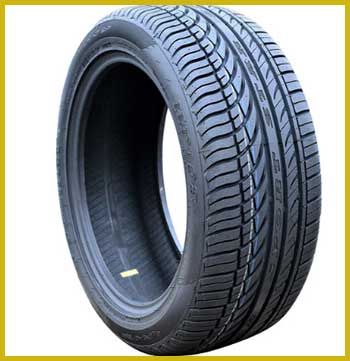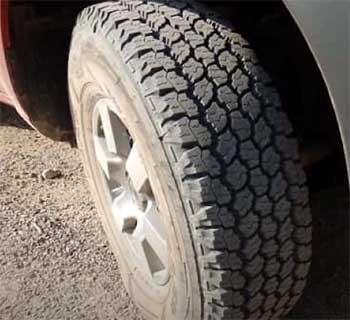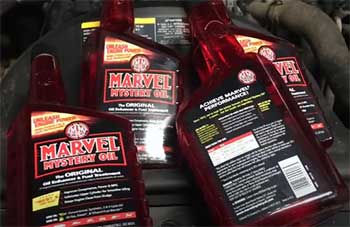Have you ever found yourself stuck in the vortex of tire options?
It’s time to break the shackles of confusion and drive straight into the world of Extra Load (XL) and Light Truck (LT) tires. This comprehensive guide will cruise you through the pros and cons of XL and LT tires, paving the way for a clear-headed decision.
A Comparative Table
| Feature | XL Tires | LT Tires |
| Design | Reinforced sidewalls for additional air pressure | Thicker, robust sidewalls for exceptional durability |
| Usage | Sedans, minivans, crossovers, and some SUVs | Light trucks, commercial vans, and heavy-duty SUVs |
| Load Capacity | Higher than standard tires | Highest among all tire types |
| Performance | Better handling and cornering | Superior traction and durability |
| Ride Comfort | Slightly compromised due to stiffer sidewalls | May be stiffer due to heavier construction |
| Suitability | Ideal for fully-loaded passenger vehicles | Perfect for heavy-duty, rugged applications |
| Noise Level | Comparable to standard tires | Typically higher due to aggressive tread patterns |
| Cost | More expensive than standard tires | Generally the most expensive |
| Fuel Efficiency | Lower due to increased weight | Lower due to weight and rolling resistance |
Understanding XL and LT Tires

Let’s start with the basics. What do we mean by XL and LT tires?
‘XL’ stands for ‘Extra Load’. These tires are designed to carry heavier loads compared to standard passenger tires.
‘LT’, on the other hand, stands for ‘Light Truck’.
These tires are engineered to accommodate higher load carrying capacity and are mostly used in pickup trucks, SUVs, and vans.
Digging Deeper into XL Tires
When it comes to bearing hefty loads, XL tires steal the show.
Designed to withstand higher air pressure, they can carry heavier weights. This makes them ideal for larger cars, SUVs, and minivans that are often laden with luggage or passengers.
Pros of XL Tires
- Superior Load Carrying Ability: XL tires thrive under pressure, literally. They’re built to bear more load and maintain their shape, ensuring a smoother ride.
- Enhanced Durability: Thanks to their robust build, XL tires can handle wear and tear better than their standard counterparts.
- Increased Safety: With their superior load-carrying capacity, XL tires lower the risk of tire failure due to overloading.
Cons of XL Tires
However, every rose has its thorns, and XL tires are no exception. Here’s the other side of the coin:
- Rougher Ride: XL tires, due to their stiffer sidewalls, may deliver a less comfortable ride compared to standard tires.
- Higher Cost: XL tires usually cost more than standard tires due to their reinforced construction.
- Increased Fuel Consumption: The extra weight of XL tires can lead to higher fuel consumption.
Also Read: Differences Between C Rated And E Rated Tires.
Navigating through LT Tires
Now, let’s switch gears to LT tires. LT tires, with their beefy construction, are the heavy-duty workhorses of the tire world. They are designed to navigate through challenging terrains and withstand heavy loads, making them a great choice for light trucks and vans.
Pros of LT Tires
- Excellent Durability: Built to last, LT tires resist punctures, cuts, and abrasions, all while carrying heavy loads.
- Versatile Performance: LT tires offer good traction on diverse terrains, be it off-roading, towing, or highway driving.
- High Load Capacity: Engineered for trucks and vans, LT tires support heavier loads than standard passenger car tires.
Cons of LT Tires
However, these heavy-duty performers also come with their downsides:
- Increased Noise: Due to their aggressive tread patterns, LT tires may produce more road noise.
- Reduced Comfort: LT tires, with their robust construction, can make the ride feel stiff.
- Higher Price: The robust build of LT tires typically comes with a heftier price tag.
Key Differences Between XL and LT Tires
While XL and LT tires share similarities in being built for heavier loads, their nuanced differences lie in their design, usage, performance, and handling characteristics.
- Design

XL tires, also known as reinforced tires, have stiffer sidewalls that allow them to hold more air pressure.
They are designed to provide extra load capacity without altering the tire’s physical size.
Thus, XL tires are essentially upgraded versions of standard tires with enhanced capacity to bear extra weight.
Conversely, LT tires are designed with a completely different end goal.
They are constructed to support the additional weight and performance requirements of light trucks and commercial vehicles.
The load range of LT tires often exceeds that of XL tires. With more robust, thicker sidewalls, LT tires offer exceptional puncture resistance and durability.
- Usage
XL tires find their primary usage in passenger vehicles, including sedans, minivans, crossovers, and certain SUVs, which require additional load support. These tires are perfect for vehicles that often travel fully loaded, either with passengers or cargo.
On the other hand, LT tires are designed for use in light trucks, commercial vans, and heavy-duty SUVs. They are also suitable for vehicles that frequently tow heavy loads or travel off-road. The sturdier build of LT tires makes them apt for more rugged, demanding applications.
- Performance
XL tires offer improved handling and cornering stability due to their stiffer sidewalls. This increased stiffness translates into better responsiveness and control, particularly at higher speeds.
LT tires are designed for heavy-duty applications, delivering top-notch performance when it comes to towing or carrying heavy loads. They also exhibit excellent traction and durability on challenging terrains, be it muddy, snowy, or rocky.
- Handling Characteristics
When it comes to ride comfort, XL tires may not match up to the standard passenger tires due to their stiffer build, but they provide better handling, braking, and cornering abilities.
LT tires, on the other hand, are known for their rough and tough handling characteristics. Due to their heavier construction, they may compromise a bit on ride comfort but offer excellent durability and puncture resistance.
Also Read: Comparison of XL And C Rated Tires.
Frequently Asked Questions (FAQ)
LT tires are engineered for heavier duty applications, like towing and carrying heavy loads in trucks, SUVs, or vans. XL tires, while also designed for extra load, are often used in passenger vehicles that need a bit more load-carrying capacity.
XL tires may lead to a rougher ride due to their stiffer construction. They can also cost more and increase fuel consumption due to their heavier weight.
If you often drive with a full load of passengers or heavy luggage, or if your vehicle manufacturer recommends it, XL tires could be worth the investment. They provide enhanced safety and durability.
XL doesn’t affect the physical dimensions of the tire. It refers to the tire’s load-carrying capacity and its ability to maintain shape under pressure.
Final Thoughts
To wrap up, both XL and LT tires have their unique strengths and weaknesses. Choosing between them boils down to your vehicle type, driving conditions, and load-carrying needs.
Keep these factors in mind, and you’re sure to roll out the perfect choice!

